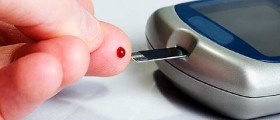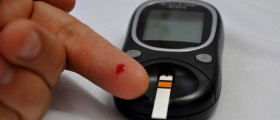
Type 2 diabetes (diabetes mellitus) is a metabolic disorder caused by relative lack of insulin or resistance of the body to use previously synthesized insulin. This is one of the most common diseases of the modern age, affecting over 150 millions of people worldwide and more than 23 million of Americans. Diabetes type 2 has reached the scale of epidemic disease in the last 20 years. Previously known as adult-onset diabetes, because it was diagnosed only among the adult population, this type of diabetes is now increasingly diagnosed among children and associated with childhood obesity.
Changes in the diet and childhood lifestyle are two most commonly blamed factors for development of obesity and diabetes type 2 among children. Initial stages of this disease can be managed, especially if the patient starts to watch the diet and changes it and also begins some form of regular physical activity. Progressed stages of diabetes type 2 need to be treated with certain medications.
Exercise is Good for Type 2 Diabetes
For children diagnosed with type 2 diabetes, regular physical activity is highly recommended by medical professionals. These kids are advised to engage in 60 minutes of exercise every day, which can be easily divided into several intervals of 10 or 20 minutes of activities, such as soccer, basketball, gym or just active break.
Any of these exercises will affect their blood glucose level and decrease it for the next 24 or 48 hours. Excess weight and obesity may worsen the existing diabetes. Regular physical activity can help these kids to get rid of extra pounds and extra fat as well, but these exercises have to be combined with proper healthy diet for best results. Exercise is also found to be good for growing kids, developing their coordination, self-esteem and physical capabilities, thus developing them into healthier adults.
What Can a Parent Do?
Actually, parents can help a lot. Any child allowed to spend unlimited amount of time in front of the TV, computer or video games will not be active as much as he or she could be. So, make sure to limit this unproductive time.
If your child is interested in team sports, he or she can skate, play basketball or do anything else. He/she can also ride a bike or play catch with his/her friends, or, if he/she is more up for some solo action, he/she could run, do some aerobics or start to kayak, play tennis, dance or start some martial arts. Some kids may need more encouragement, so park at the furthest end of the parking lot near the store, let him/her walk the dog or you can both use stairs instead of elevator.
Whatever your child wants to do, always make sure he or she is healthy and up for this. Consult your doctor and ask if there are any precautions regarding physical activities and whether you should check your child’s blood sugar before and after the exercise. Some kids may need to learn symptoms of low blood sugar and how to manage them.
Medical bracelet may also be necessary in some cases, as well as informing teachers, supervision parents or coaches about his or her medical condition. Regardless these measures, every child suffering from type 2 diabetes should be engaged in exercise of their choice.

















Your thoughts on this
Loading...